
Throughout history, military tacticians and engineers have continually stretched the boundaries of imagination and developed war machines that defy the ordinary. From towering behemoths to bizarre contraptions straight out of science fiction, history is replete with tales of unconventional war machines that defied expectation and sometimes even logic. While some of these machines have become legendary icons, others languish in obscurity, their peculiarities rendering them almost surreal.
In this exploration of the past, we uncover a trove of eccentric war machines that once prowled the battlegrounds. Whether forged from necessity or through the sheer brilliance of their creators, these mechanical wonders exemplify humanity's unyielding pursuit of supremacy amid the chaos of war.
Related: Important Weapons from World War II Still in Use Today
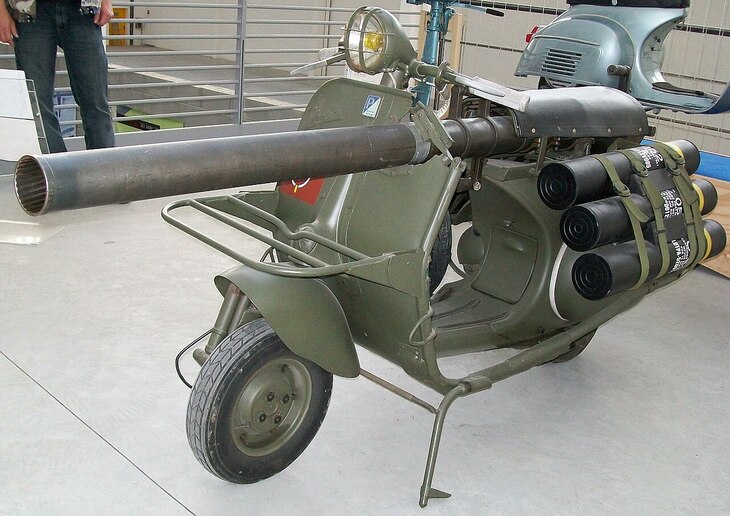
In the mid-50s, French paratroopers came up with an inventive idea: they repurposed a Vespa scooter into an anti-tank gun platform. Manufactured by Ateliers de Construction de Motocycles et Automobiles under Vespa's license, each unit was armed with a U.S. M20 75mm recoilless rifle. This compact yet powerful weapon could penetrate armor up to 3 and 15/16 inches (100mm) thick. This adaptation fused mobility with firepower and provided paratroopers with a swift and effective means to confront enemy tanks.
The scooter's primary objective was to provide significant support to paratroopers, despite reservations about mounting a gun on it. However, the gun could be removed and attached to a Browning machine gun tripod for firing. Reportedly, in emergencies, the Vespa-mounted gun could still be fired, thanks to a design that redirected propellant gases to reduce recoil.
During the First World War, the Germans used a massive railway-mounted cannon to bombard Paris. In 1936, Adolf Hitler revived the idea of such a colossal weapon, consulting the head of Krupp armaments about a gun capable of penetrating the Maginot Line fortifications. Thus, the Schwerer Gustav was born. This 80-cm cannon, weighing a whopping 1,350 tons, could hurl a 7-tonne shell a stunning 29 kilometers (18 miles).
Unfortunately, it was completed after the German Army's assault on France in May 1940. Later dubbed "Dora" by its artillery unit in January 1942, it unleashed 47 rounds on the Soviet city of Sevastopol, ultimately wearing out its barrel. Its counterpart, the Schwerer Gustav 2, never saw action, and was stored at the Rügenwalde artillery range in March 1943, as the era of big guns faded with the emergence of aerial bombardment in World War II.
The Surcouf was a French submarine cruiser commissioned in 1934, considered one of the largest submarines of its time. The submarine had an innovative design that combined the features of a submarine and a surface ship. It also had formidable armor and a large crew capacity.
The Surcouf was armed with twin 203mm (8-inch) guns that were mounted in a turret, which allowed it to engage surface targets with considerable firepower. Additionally, the submarine carried torpedoes and anti-aircraft guns. Despite its impressive credentials, the Surcouf faced many challenges during its service, including mechanical issues and accidents. Unfortunately, its career was cut short during World War II when it mysteriously disappeared in the Caribbean in 1942. It's believed that it was lost due to a collision with an American freighter or a German submarine.
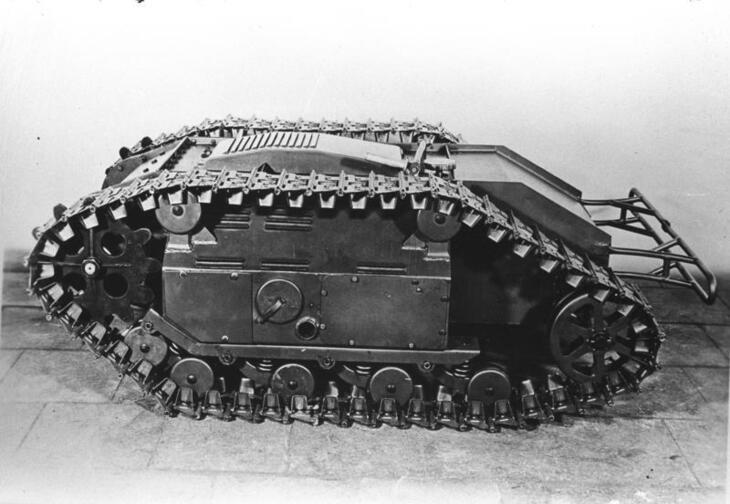 Image source: Wikimedia Commons
Image source: Wikimedia Commons
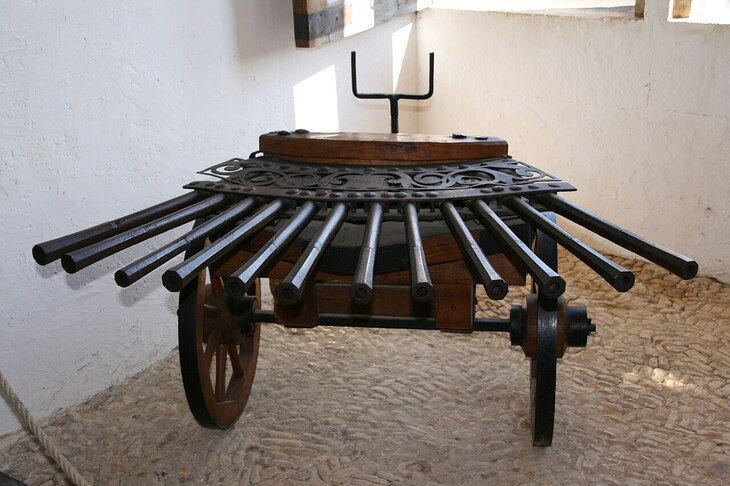 Image source: Wikimedia Commons
Image source: Wikimedia CommonsThe Ribaudequin, or organ gun, was a medieval artillery weapon that looked like a large organ because of its multiple barrels mounted together. It originated in Europe around the 14th century and was a precursor to modern machine guns. The Ribaudequin featured several barrels arranged parallel to each other, allowing it to fire multiple projectiles simultaneously or in rapid succession. This design increased its firepower and made it effective against infantry formations and fortifications.
While its exact origins are uncertain, the Ribaudequin played a significant role in medieval warfare, particularly during sieges. Having the ability to launch a barrage of projectiles, it became a formidable weapon on the battlefield and had a significant impact on subsequent advancements in artillery technology.
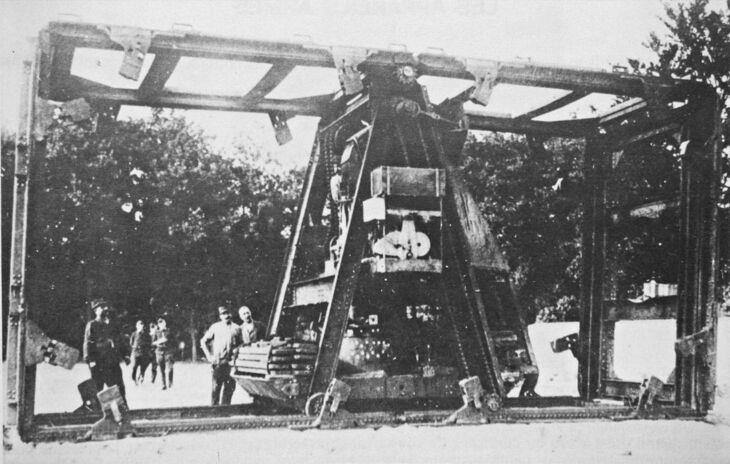
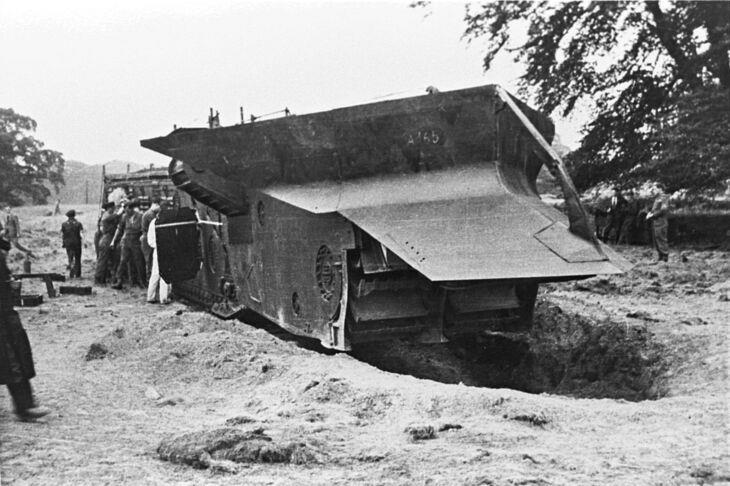
Cultivator No.6 was a British invention during the World War that was designed to dig tunnels and create underground bunkers for military purposes. The Mole, as it was popularly known, was one of many inventions developed by the British to gain an advantage over the enemy. It was named after its ability to dig through the ground like a mole and was mainly used to build hidden bunkers and underground headquarters for the British military and government officials.
The Mole played a crucial role in the war effort by allowing the British to maintain a secure and secret location from which to direct their operations and coordinate their defenses. Winston Churchill himself nicknamed it the "Mole" and praised its effectiveness in keeping the British safe during the war.
This huge machine weighed a colossal 130 tons and spanned an incredible 77 feet, 6 inches (23.62 meters) in length. While the initial blueprint envisioned the creation of numerous such units, the project underwent severe scaling back, limiting the final output to a mere few.